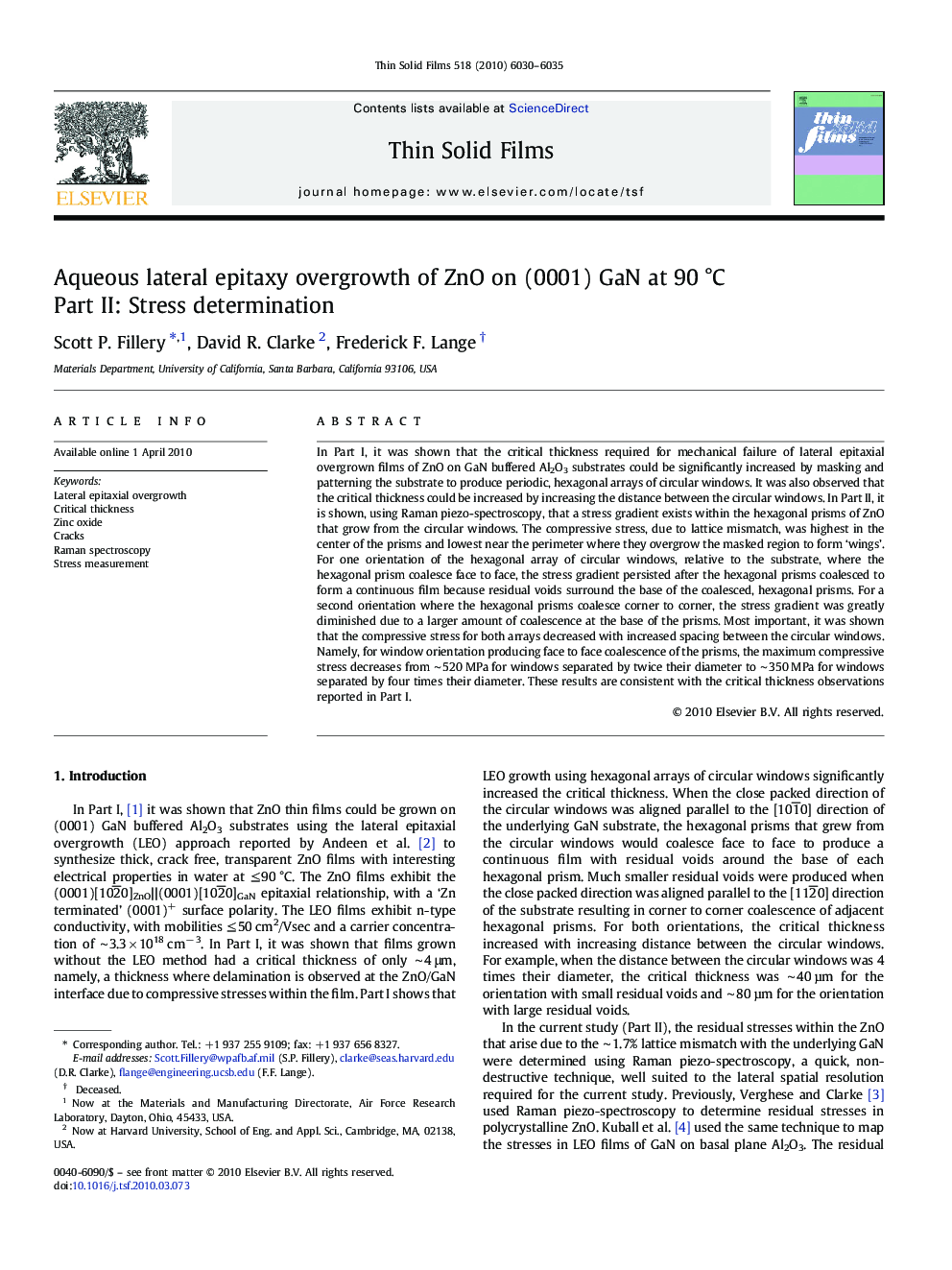| Article ID | Journal | Published Year | Pages | File Type |
|---|---|---|---|---|
| 1670791 | Thin Solid Films | 2010 | 6 Pages |
In Part I, it was shown that the critical thickness required for mechanical failure of lateral epitaxial overgrown films of ZnO on GaN buffered Al2O3 substrates could be significantly increased by masking and patterning the substrate to produce periodic, hexagonal arrays of circular windows. It was also observed that the critical thickness could be increased by increasing the distance between the circular windows. In Part II, it is shown, using Raman piezo-spectroscopy, that a stress gradient exists within the hexagonal prisms of ZnO that grow from the circular windows. The compressive stress, due to lattice mismatch, was highest in the center of the prisms and lowest near the perimeter where they overgrow the masked region to form ‘wings’. For one orientation of the hexagonal array of circular windows, relative to the substrate, where the hexagonal prism coalesce face to face, the stress gradient persisted after the hexagonal prisms coalesced to form a continuous film because residual voids surround the base of the coalesced, hexagonal prisms. For a second orientation where the hexagonal prisms coalesce corner to corner, the stress gradient was greatly diminished due to a larger amount of coalescence at the base of the prisms. Most important, it was shown that the compressive stress for both arrays decreased with increased spacing between the circular windows. Namely, for window orientation producing face to face coalescence of the prisms, the maximum compressive stress decreases from ∼ 520 MPa for windows separated by twice their diameter to ∼ 350 MPa for windows separated by four times their diameter. These results are consistent with the critical thickness observations reported in Part I.
